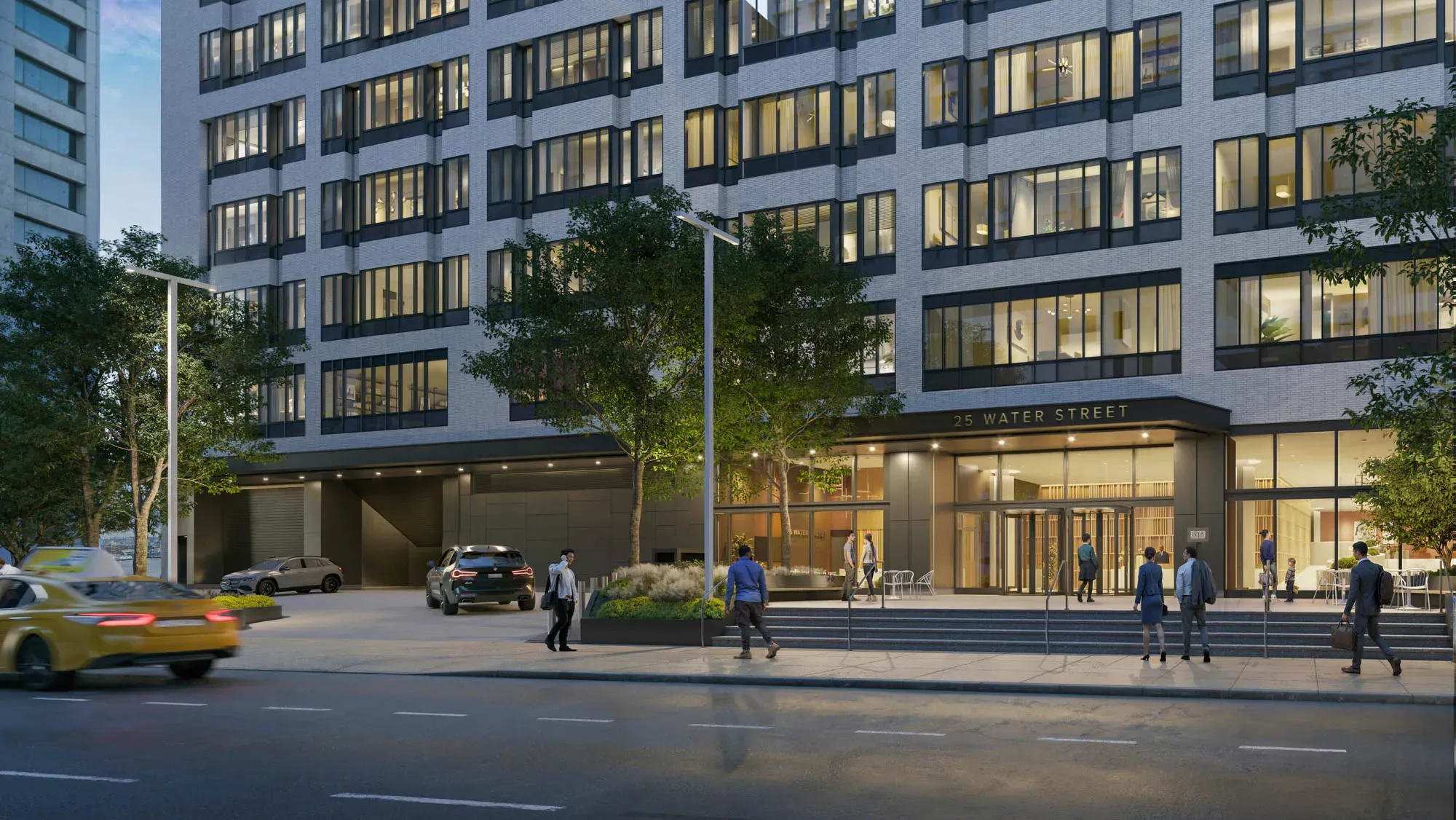25 Water Street Conversion Breaks Ground as NYC’s Largest Office-to-Home Project
Introduction
Construction has officially begun on 25 Water Street, heralded as New York City’s largest office-to-home conversion. This landmark project represents a strategic approach to addressing office vacancy while meeting housing demand in Manhattan. Developers aim to transform the building’s commercial floors into residential units, combining modern design, amenities, and sustainable features, while contributing to urban revitalization and neighborhood vibrancy.
Project Scope and Significance
25 Water Street encompasses millions of square feet of underutilized office space. The conversion project will deliver hundreds of residential units, ranging from studios to luxury apartments, integrated with retail and community-oriented amenities. The project is significant not only for its scale but also for its role in demonstrating adaptive reuse as a viable solution to evolving urban real estate challenges, including declining office occupancy and high demand for centrally located housing.
Economic Drivers and Market Context
The conversion aligns with broader market trends, where Manhattan office vacancies have surged due to hybrid work models and changing corporate requirements. Meanwhile, residential demand remains strong, particularly for modern, amenity-rich housing in prime locations. Developers and investors see opportunity in repurposing existing structures, reducing construction costs relative to new builds, and delivering units that meet contemporary lifestyle expectations. The project is expected to stimulate economic activity in construction, property management, and local retail sectors.
Design and Architectural Features
The building will incorporate modern architectural upgrades, including energy-efficient systems, floor-to-ceiling windows, flexible unit layouts, and smart home technology. Public and private amenities, such as rooftop terraces, fitness centers, and community spaces, enhance the appeal for residents. The conversion also preserves structural integrity while adapting interior layouts for residential functionality, demonstrating innovation in large-scale urban adaptive reuse.
Sustainability and Environmental Considerations
Sustainability is central to the 25 Water Street conversion. Developers plan to implement high-performance HVAC systems, water conservation measures, and green building materials, contributing to reduced energy consumption and carbon footprint. Adaptive reuse itself minimizes construction waste and resource use compared to new builds. The project aligns with New York City’s environmental initiatives and ESG expectations, offering both operational efficiency and long-term environmental benefits.
Urban Impact and Community Benefits
The conversion is expected to revitalize the surrounding area, increasing foot traffic, supporting retail and dining, and enhancing public spaces. Residential occupancy injects vitality into formerly office-dominated streets, creating a more balanced 24-hour urban environment. Community-focused design elements, such as accessible retail, public plazas, and landscaping, ensure that the development contributes positively to the neighborhood’s quality of life.
Financing and Developer Strategy
The project is backed by a consortium of investors and development firms, leveraging both private capital and potential tax incentives for adaptive reuse. Financial modeling indicates attractive returns through rental income, long-term appreciation, and enhanced property value. The conversion strategy mitigates risk by repurposing existing assets, reducing construction time compared to greenfield developments, and responding to proven market demand for centrally located residential units.
Market Implications
25 Water Street is likely to influence broader Manhattan real estate trends, signaling that office-to-residential conversions are viable at scale. The success of such projects may encourage additional adaptive reuse, alleviating office over-supply while addressing housing shortages. Moreover, large-scale conversions could stabilize rental markets, support urban density, and create new economic and social hubs in previously commercial-heavy districts.
Challenges and Risks
Despite its promise, the project faces logistical and regulatory challenges. Converting large office floors into residential units requires careful planning to comply with building codes, fire safety regulations, and zoning restrictions. Structural modifications, utility upgrades, and construction coordination pose operational risks. Market fluctuations, financing costs, and competition from new residential developments also present financial risks that must be managed proactively.
Future Outlook
Once completed, 25 Water Street will serve as a benchmark for mega-scale office-to-home conversions in Manhattan. The project may influence policy-making, development strategies, and investor interest in adaptive reuse, shaping the future of the city’s real estate market. Long-term, it demonstrates how strategically repurposed urban assets can address evolving economic and demographic trends, creating sustainable and vibrant neighborhoods.
Conclusion
The 25 Water Street conversion exemplifies how adaptive reuse can address contemporary urban challenges, transforming underutilized office space into desirable residential housing. By integrating modern design, sustainable practices, and community-focused amenities, the project enhances neighborhood vitality while generating economic, social, and environmental value. As New York City continues to evolve, 25 Water Street stands as a model for large-scale, innovative urban redevelopment, reshaping both the skyline and the city’s approach to mixed-use real estate solutions.




